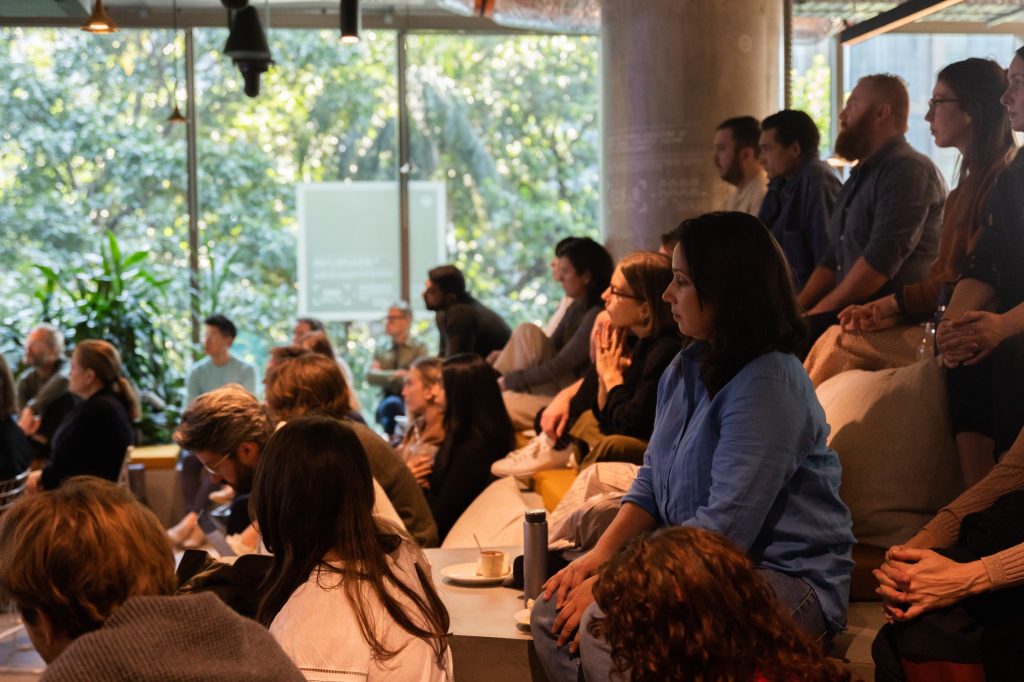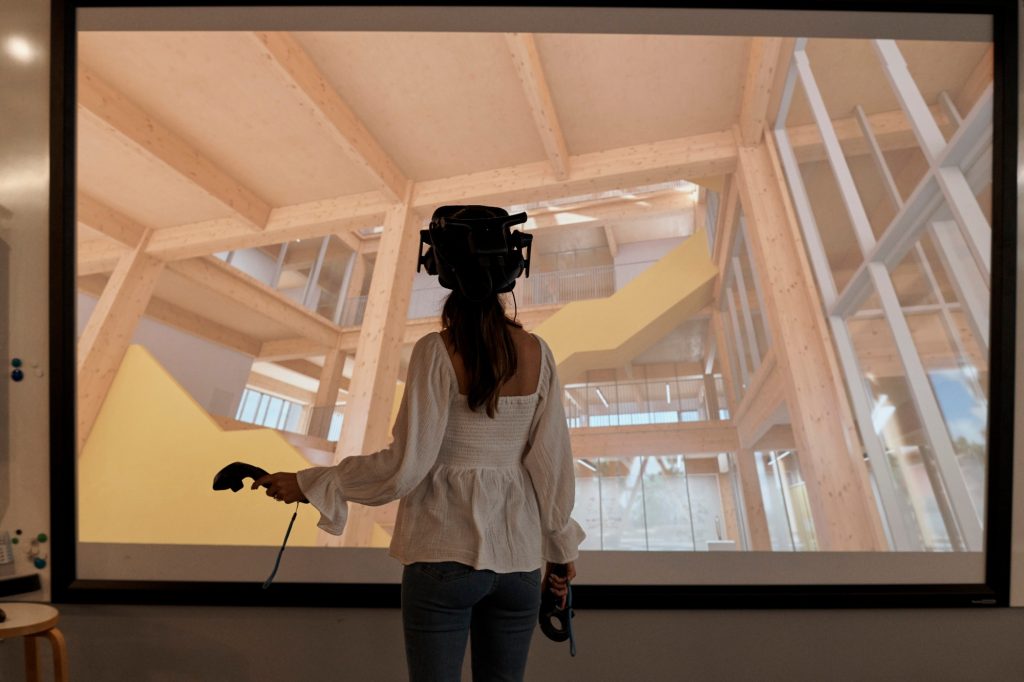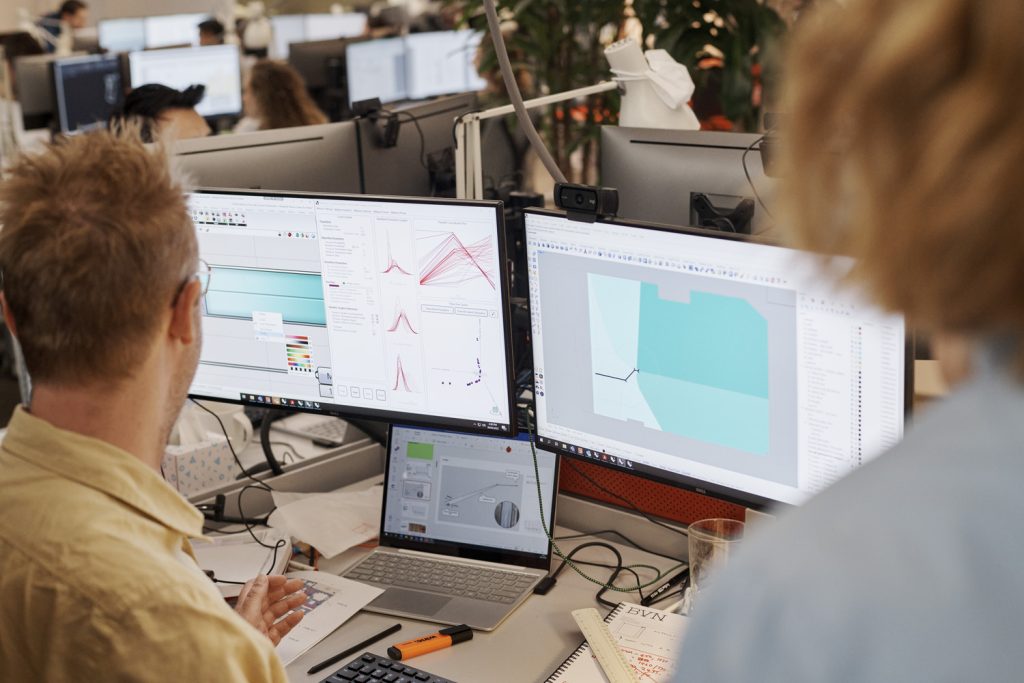
BVN announced as partner for 30UNDER30 Architects and Innovators of the Built World
BVN announced as partner for 30UNDER30 Architects and Innovators of the Built World
Share
Australian Design Review’s 30UNDER30 Architects and Innovators of the Built World stream serves as a focal point for mentorship and career development in the realms of architecture and design for practice partner BVN.
BVN takes pride in its inaugural partnership with this initiative. The practice is committed to providing young designers with valuable opportunities to collaborate alongside seasoned professionals, fostering both personal and career development. Australian Design Review (ADR) catches up with Neil Logan, co-CEO, to discuss BVN’s unique partnership with ADR’s 30UNDER30 program.

ADR: What are the driving philosophies and core values behind your practice that make what you do stand out in the industry?
Neil Logan: BVN is a global creative collective with a shared vision for a better planet. Our work is underpinned by the things we care about, which we call our tenets. Today, they are Towards Net Positive, Designing with Country, Radical Adaptation, Neighbourhood Making and Elastic Work.
Innovation is a key theme for the Australian Design Review 30UNDER30 Architects and Innovators of the Built World program. How does your firm encourage and integrate innovative thinking into your projects and design processes?
To contribute to a better planet through our work, we must continually innovate. The world around us is changing rapidly and the need to bring society, infrastructure and ecology into balance has never been greater. We acknowledge that our conventional ways of working do not necessarily support this.
Our focus on innovation extends to all parts of practice – from defining a client’s brief that improves social outcomes, to reducing waste from our processes and in construction in our pursuit of regenerative impact. It is through the use of advanced technologies that we seek radical transformation.

As a practice partner of the ADR 30UNDER30 Architects and Innovators of the Built World program, how do you envision the next generation of architects shaping the future of the industry, and how does your firm contribute to their development?
Applying their new perspectives and creative talents, the next generation of architectural talent will bring their passion for social justice, the planet, new technologies and great design together to tackle old problems in new ways. At the same time, they will have significant new challenges to confront. It is in the development of their creative solutions, and the willingness of practices to integrate these solutions into our ways of working, that exciting change and evolution in the profession will occur.
Some of these challenges include:
- Designing for sustainability and resilience: This is now a moral obligation. As climate change and environmental issues become more urgent, architects will have to influence, challenge and inspire stakeholders, developers, governments and clients to create buildings that have a net positive impact. To bring about this change on a practical level means upskilling in their design and advocacy competencies.
- Leveraging new technologies and tools for creativity and innovation: Advances in prefabrication, digital fabrication, artificial intelligence, biotechnology and 3D printing will continue to open new possibilities for architectural design and construction.
- Engaging with social and cultural diversity: As the world becomes more interconnected and diverse, architects will have to increasingly consider the needs and preferences of different users and communities, and design inclusively for them. This means going beyond the minimum requirements of building codes and standards, and addressing issues such as neurodiversity, physical abilities/impairments, cultural appropriateness and awareness, wellness and comfort.
To support the growth and development of the next generation of architects, BVN is committed to providing them with:
- Mentorship and guidance: Our mentoring program is open to all BVN employees and strives to nurture the cultural growth of the practice through the professional growth and personal development of the individual.
- Feedback and opportunities: We use monthly one-to-ones to provide feedback and understand each staff member’s skills, their career and personal goals, and where they want to go in terms of experience and opportunities. It’s a forum to outline any challenges they face and refine where to focus their learning.
- Learning resources and support: We have our own dedicated learning portal to host the talks and content our subject matter experts create to enable our people to self-direct their learning at their own pace, ensuring they have access to the knowledge they require.

Collaboration often plays a vital role in successful architectural projects. How does your practice approach collaboration, both internally among team members and externally with clients and stakeholders?
Collective creativity to design a better future is our core purpose. Our shared contribution to the creative process is baked into BVN’s DNA and powers our design thinking. This is our approach internally and externally with project partners and industry participants. Creating a generous and open culture where ideas and dialogue can flow is what we seek.
Sustainability and environmental consciousness are increasingly important in modern architecture. Could you share some of the sustainable design principles or practices that your firm employs to create more environmentally friendly structures?
Our goal is to create regenerative architecture. This means each project would give back more than it takes from the planet.
Our regenerative practice group works alongside project teams to develop and apply ecological design strategies, perform environmental analysis and provide critical review throughout the design process. We recognise that the architects need to be supported in developing new skills and a new mindset to leverage their experience, knowledge and good intentions into quantifiably positive, rigorously verifiable, as-built results. We continue to collaborate with Jason McLennan, founder of the Living Building Challenge, and his team to integrate their approach as leaders in regenerative practice into our everyday operations, and grow our practice-wide strategic goals in this space.
An important component of a regenerative approach to architecture in the Australian context is caring for Country. Our Designing with Country framework guides the way we think about projects that engage with First Nations communities and contexts. Acknowledging that a site belongs to a specific Country, and with that a living history of regenerative First Nations land-management, enables us to draw inspiration, engage with ideas and create opportunities directly from that place and co-authored with the people to whom it belongs.
View the 30UNDER30 shortlist here.
You Might also Like
























